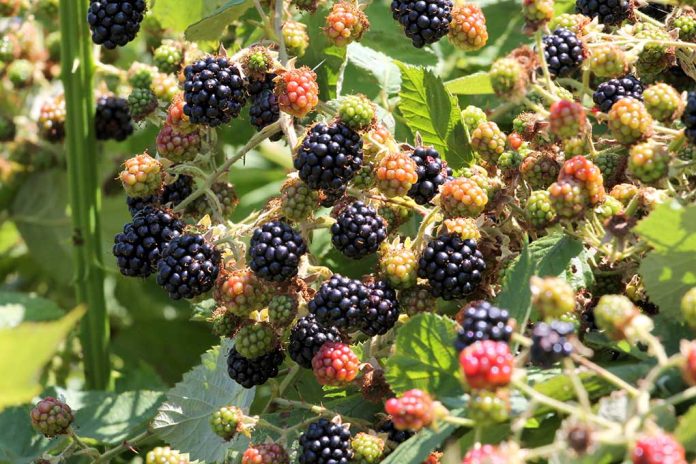(SurvivalDaily.com) – Knowing how to tell the difference between a juicy, sweet treat and a poisonous berry can literally save your life. While there are many edible berries, the ones covered below have look-alikes that can sometimes be very toxic – if not deadly.
Elderberries
Elderberries are found in large flat clusters, either purple or dark blue in color. There are two main berries that look like elderberries.
- Water Hemlock Berries: These berries look very similar to elderberries but are extremely toxic. Like Elderberries, these also form in clusters and are purple in color. The best way to tell the difference between elderberries and water hemlock berries is the stem of the plant. Elderberries are wood and have bark, whereas water hemlock has a smooth, often green or green and purple stem.
- Pokeberries: Only mildly toxic, pokeberries may look like a long cluster of grapes. They are similar to elderberries except they are about the size of a pea. Elderberries are smaller than a pea and perfectly round. Pokeberries, on the other hand, are somewhat flat.
Raspberries
Raspberries are either black or red, and can be found in much of North America. Raspberries can be easily confused with thimbleberries, which, as the name implies, look like thimbles. Similar to raspberries, thimbleberries are non-toxic. The easiest way to tell the difference is by the thorns. Thimbleberries have no thorns, unlike raspberries, which have small to medium-sized thorns.
Admittingly, there are better ways to spend your days than looking for berries, but you never know when you might have to forage for them. It’s better to know about the good and bad ones before something happens. What’s the harm in learning something useful that could one day save your life?
Birds and Berries
Though birds and humans have very different anatomy, what they eat can tell us a lot about what’s safe for us to eat. If you notice birds avoiding certain berries, take a cue from them and do the same. Even after that, don’t just assume they are safe. Test them before eating them.
Berry Tests
This doesn’t just apply to berries, but there are a few ways to test foraged food without putting anyone at too much risk.
Remember that nature has a way of speaking up loud and clear, too. If you happen to taste a ripe berry and it stings or tastes horrible, it’s probably not good for you. But don’t start with a taste test.
- Start by allowing the berry to touch your skin for a few hours. Hold it in your hand, for instance. At the first sign of a bad reaction, get rid of the berry and assume it’s bad for you. It might even be that you’re allergic to it and the berry itself isn’t toxic to everyone. You still don’t want to consume it yourself.
- Repeat the process above, but squeeze the juice from the berry onto your skin, rather than just allowing the outside of it to touch you.
- Taste it. That doesn’t mean eat a handful of them. Simple taste one berry and wait. If it stings your tongue or gives you any other unusual sensations, end the experiment and note that the berry may be toxic. Do not consume any more of it or other berries like it.
- Try ingestion. Again, don’t ingest a bunch of berries. Just try one and wait 24 hours. If you have no adverse reactions at all, try a couple more. Because berries are so small, it may take several before you do show adverse reactions, if there are any to be shown. The key here is to be patient and allow enough time to get accurate results from each test before moving to the next one.
As usual, we recommend you do these tests before you HAVE to do them, so you can easily get proper medical care for any issues that may arise. Start by exploring the area around you, then branch out to other areas and make a note of where you found edible berries. That way, you can revisit the location if the need arises.
Do you know of any poisonous berries that we didn’t mention here? Reply to your email and let us know, we would love to hear from you!
Copyright 2020, SurvivalDaily.com

















